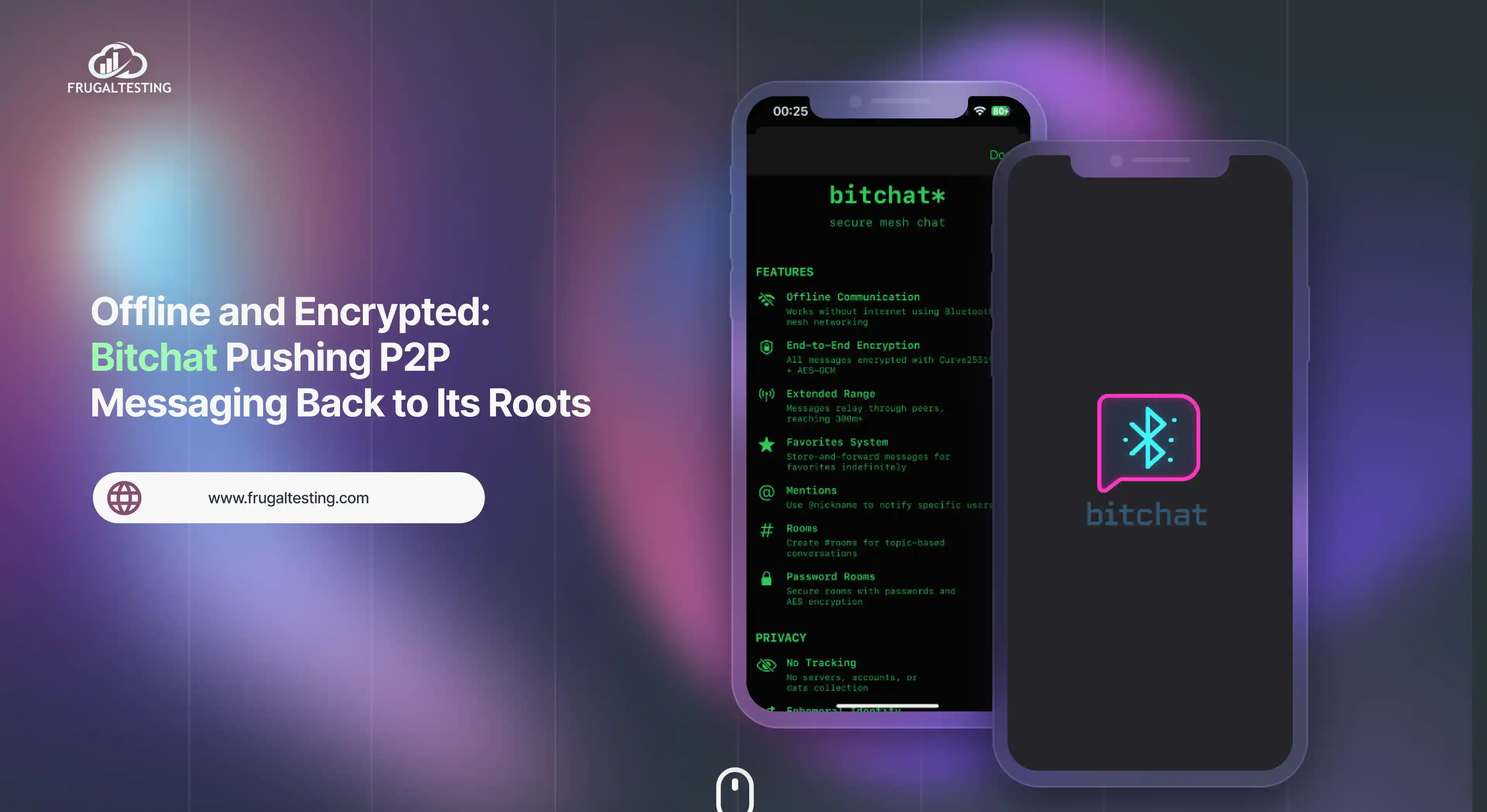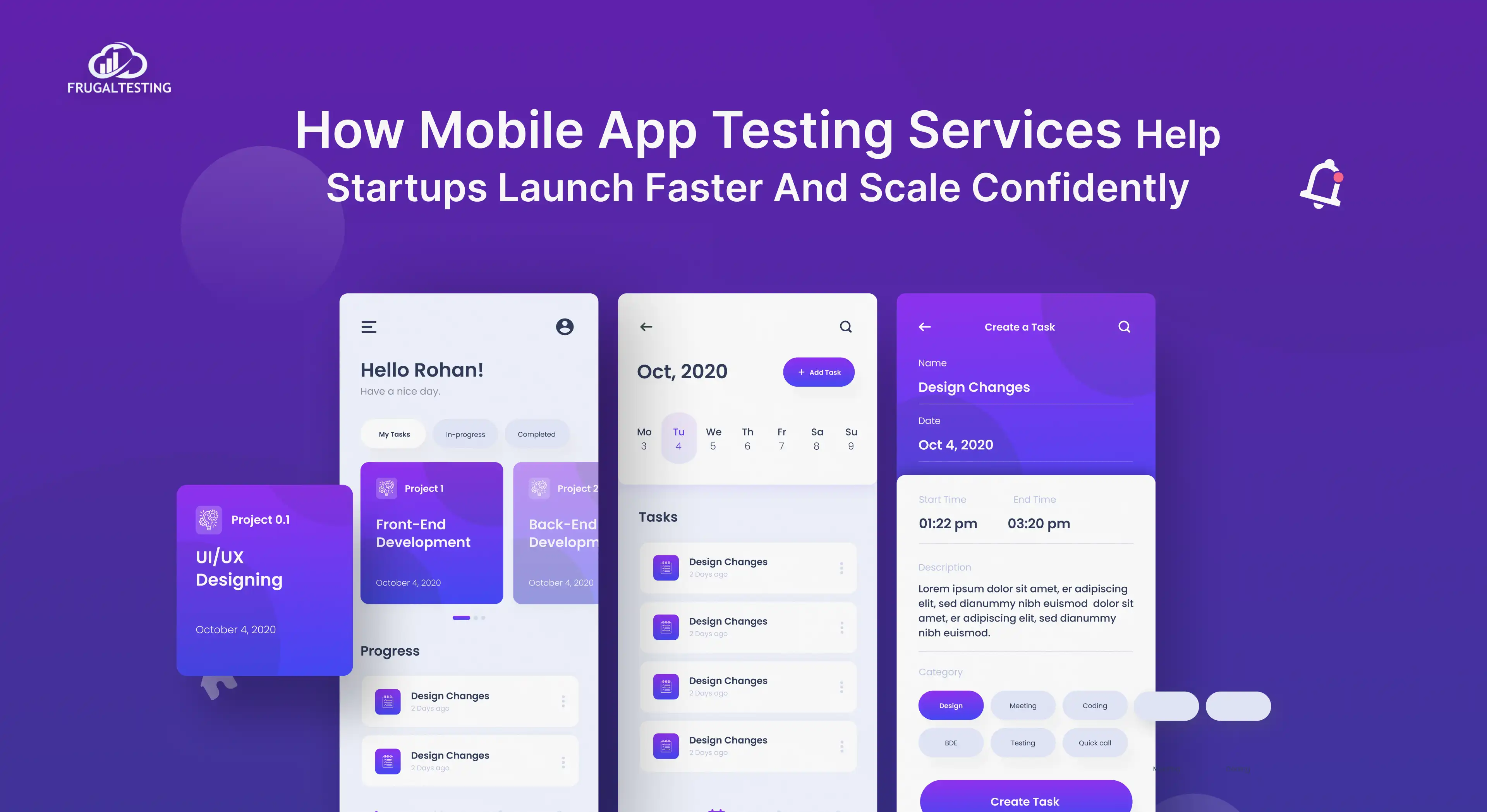Ever wondered how software keeps its secrets safe? Here’s a new perspective on code integrity as we explore white-box testing together.
📝White box testing, where the code reveals its secrets, and quality becomes an open dialogue between developers and their creation.
📦White box testing is puzzle solver when it comes to code, making sure that all the pieces fit together exactly to provide levels of software development.
🌟Here, we'll simply so you can start learning this new idea about white box testing.
🌟We will see latest best features of White box Testing which is beneficial in 2024.
🌟Learn the benefits and limitations of white box testing and gain an awareness of its importance.
🌟Here as well as we will be discussed White box testing examples, types, and methods.
🌟Learn easy strategies for effective white box testing using our recommended practices.
Now let's explore more about white box testing and the Types, Tools, and Functionality.
What is white box testing?
White box testing is a technique that enables testers to look into and verify a software system's internal operations 🛠️📐.
White box testing is the meticulous gardener in the context of software integrity, snipping away vulnerabilities to create a healthy environment🧑💻.
Testers check the source code, data flow, control flow, and system architecture to ensure the software performs as planned in each line of code. 💻.
White box testing's transparency reveals the underlying nature of software code, enabling developers to create software structures that are strong. 🤖.
White box testing's accuracy enhances the developer's vision by turning code into a canvas on which excellence is painted with each keyboard🧑💻.
White box testing is a one of key safety method that helps in identifying problems that hackers can use control flow testing💻.

Why white box testing important?
🧪It plays an important role in the software development process for the following main reasons.
- Uncover Hidden Defects: Gives testers the ability to find flaws that other testing approaches might miss.
- Code Optimization: Helps in code optimization for increased efficiency.
- Increase Code Coverage: Offers a higher level of code coverage since it explores the internal code structure.
- Better Understanding of System Behavior: Enables developers and testers to understand the behavior of the system at a deeper level.
- Enhanced Security: One of the main concerns in software development is security.
- Compliance and Standards: Software applications must meet or exceed certain compliance and regulatory standards in a number of industries.
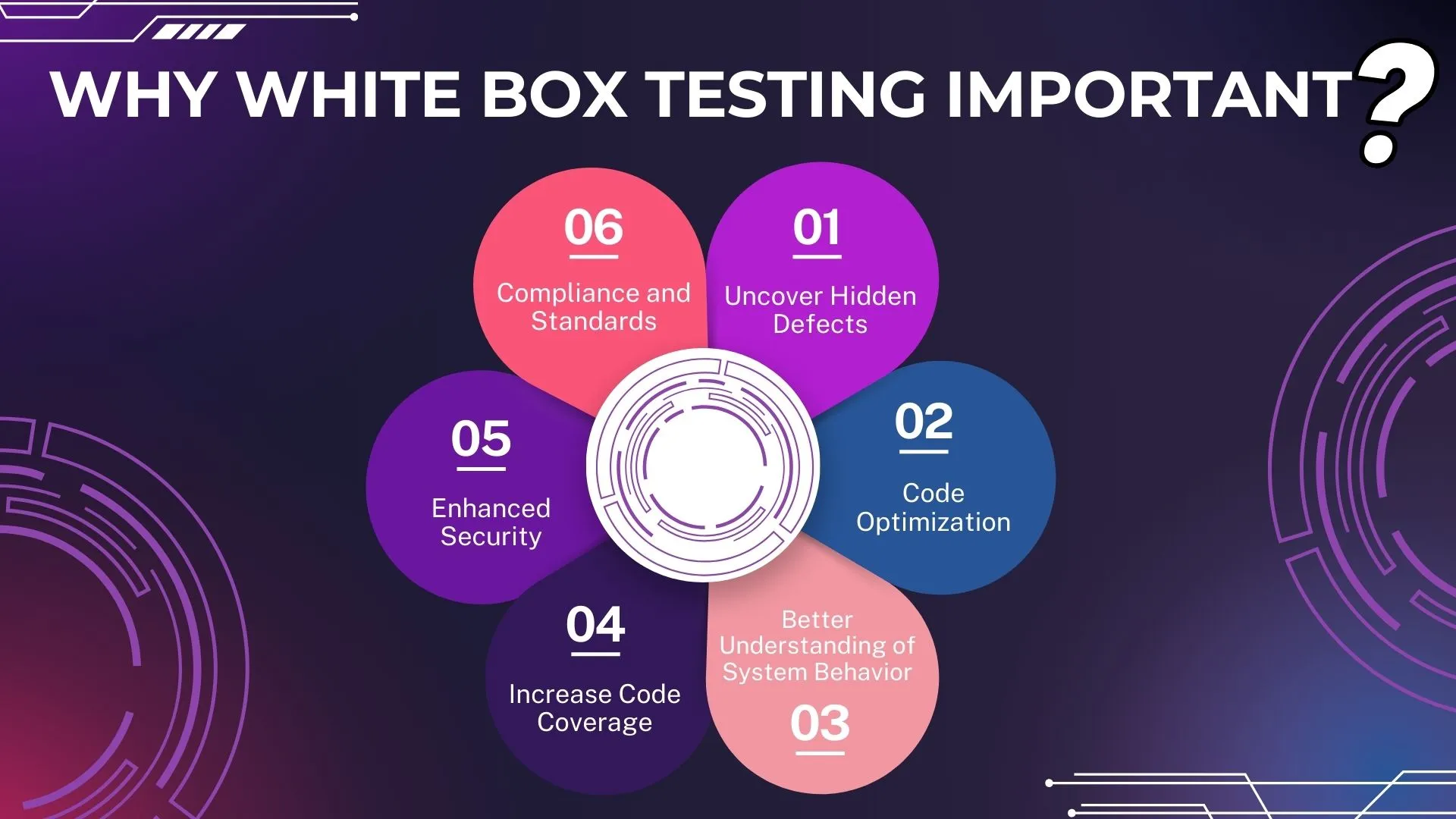
Choose white box testing over other testing methodologies
🧪These are some reasons for selecting white box testing over alternative testing methods.
🟢Code Visibility: Provides full visibility into the internal structure, code logic, and implementation details of the software.
🟢Early Detection of Defects: By examining the code at the implementation level, white box testing can identify and address defects early in the development lifecycle, reducing the cost and effort required for later-stage bug fixing.
🟢Path Coverage: This ensures that various scenarios and conditions within the code are tested, leading to more robust and reliable software.
🟢Integration Testing: It is well-suited for integration testing, as it enables the testing of interactions between different components and ensures that they function cohesively as part of the entire system.
🟢Performance Optimization: This can help in-depth understanding the performance of the software and ensure that it meets specified performance requirements.
🟢Security Testing: White box testing is effective for security testing, allowing testers to analyze the code for potential vulnerabilities and security risks.
🟢Customized Test Cases: This enables the testing of specific functionalities and scenarios, increasing the thoroughness of the testing process.
🟢Code Maintainability: White box testing can contribute to the long-term maintainability of the codebase by providing insights into areas that may require refactoring or improvement.
🟢Developer Collaboration: White box testing encourages collaboration between testers and developers.
Although these points highlight the benefits of white box testing, it is important to remember that the full testing method frequently combines several testing methodologies.
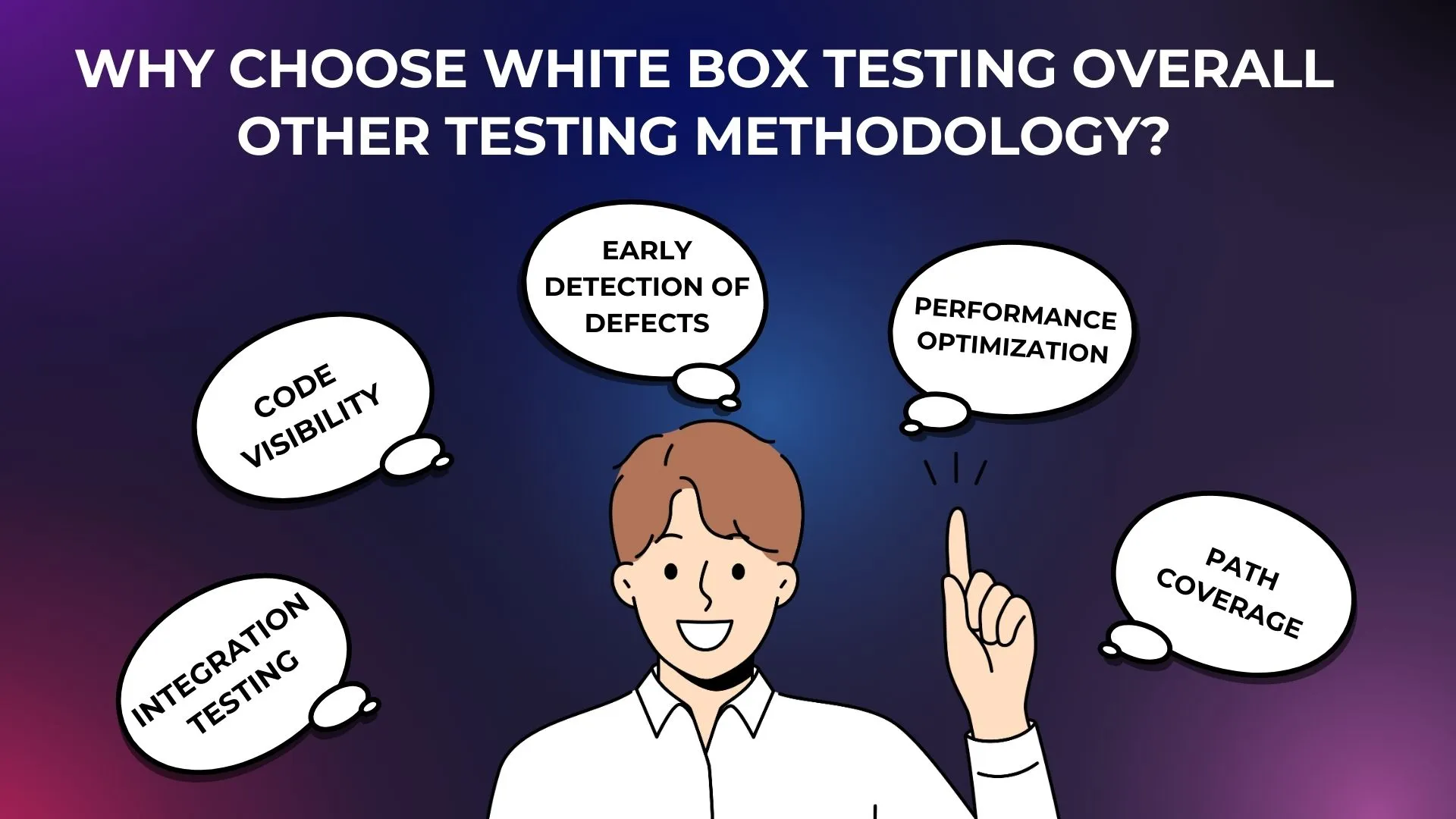
Types of white box testing in software engineering
There are several levels of testing of white box testing techniques, each focusing on different aspects of the software's internal structure.
Here are some common types of white box testing:
🟡Unit Testing: Focuses on testing individual units or components of a software
application in isolation.
🟡Integration Testing: Involves testing the interactions between different units or components to ensure they work together correctly.
🟡System Testing: Tests the entire system as a whole to ensure that all components work together to achieve the desired functionality and hidden errors.
🟡Regression Testing: Ensures that new code changes do not negatively impact the existing functionality of the software internal design.
🟡Path Testing: Examines all possible paths through a unit or system to ensure that each path is executed and tested at least once.
🟡Statement Testing: Focuses on executing individual statements in the code to ensure that each statement is executed at least once.
🟡Branch Testing: Tests all possible branches or decision points in the code to ensure that each decision results in an executable statement.
🟡Condition Testing: Involves testing the different conditions within a decision point to ensure that all possible combinations are considered in software testing methods.
🟡Loop Testing: Focuses on testing the functionality of loops, including boundary value conditions and the correct execution of levels of software testing.
🟡Data Flow Testing: Examines the flow of data within the application, focusing on how data is input, processed, and output.
These techniques can be applied at different stages of the software development life cycle to ensure the reliability, correctness, and robustness of the software.
Let's take a closer look at white box testing's effectiveness and some of the specific techniques we will use in 2024.
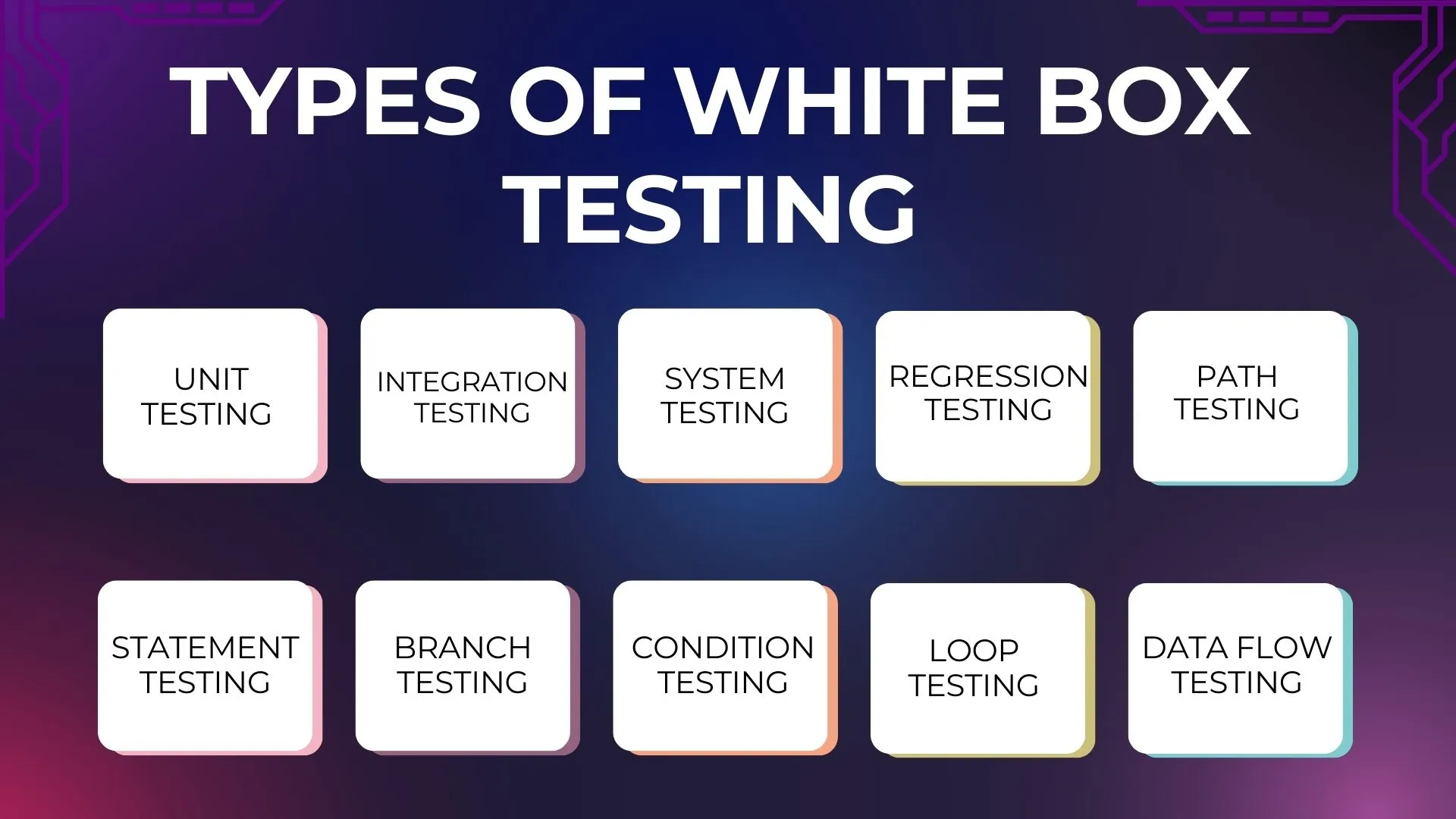
How do you perform White Box Testing?
Making sure that the code runs properly and that all code paths are tested is the error-free software.
These are the basic procedures for doing White Box Testing.
⏩Understand Requirements: Review and understand the software requirements and software quality to identify the expected behavior and functionality.
⏩Identify Test Cases: Create test cases based on the internal logic and structure of the software. This may involve testing individual functions, methods, or paths within the code.
⏩Code Inspection: Conduct a thorough code review to understand the structure, logic, and relationships between different components in the codebase.
⏩Boundary Value Analysis: Test input values at the boundaries of acceptable ranges to identify logical flow related to edge cases.
⏩Error Handling Testing: Evaluate how the application handles different types of errors, exceptions, and unexpected scenarios.Security Testing (optional): Perform security assessments to identify and address potential vulnerabilities in the code.
⏩Regression Testing: After making changes to the code, perform regression testing to ensure that existing functionality remains unaffected.
⏩Documentation: Document the test cases, results, and any issues found in software testing techniques.
It is used together with other testing methods, such black box testing, to provide full coverage and verify the program's overall quality.

Latest White box Testing Tools for 2024
Now, let's talk about tools.
Here are some common white box testing tools nowadays using testers and as well as useful for the developers.
- J Unit: Mostly used in the testing framework for Java applications, primarily focused on unit testing.
- Selenium WebDriver: It is mainly used for testing web applications.
- JUnitParams: An extension to JUnit that allows you to use parameterized tests with concise syntax.
- Mockito: It allows the creation of mock objects and helps in writing test cases.
- Cobertura: It helps identify areas of code that have not been exercised during testing.
- SonarQube: It can analyze and measure code quality, including potential bugs and security vulnerabilities.
- PHPUnit: A testing framework for the PHP programming language, used for unit testing.
- PyTest: A testing framework for Python that supports unit testing, functional testing, and other types of testing.
- CppUnit: A C++ port of the JUnit testing framework, used for unit testing in C++ applications.
- Code Coverage Tools (JaCoCo, Cobertura): These tools help measure the extent to which the source code of a program has been tested.
Let's move to the next step and see some examples of white box testing which is useful in 2024.

Example of white box testing
Let's consider a simple example of a function that calculates the factorial of a given number. The function is implemented in Python as follows:

Now, let's imagine we want to perform White Box Testing on this function. Here's how we can approach it:
Statement Coverage: We guarantee the execution of each line of code within the function, ensuring comprehensive testing. This entails testing both the if and else branches to cover all possible code paths.
Branch Coverage: We validate the execution of both the true and false branches of conditional statements. For instance, in the case where n is equal to 0, we test the if branch, while for non-zero values of n, we examine the else branch.
Path Coverage: Our aim is to traverse every conceivable path through the function. With only one conditional statement present, achieving path coverage is relatively straightforward. It necessitates testing both scenarios: when n equals 0 and when it does not.
Condition Coverage: We ascertain that every condition within the function is assessed under both true and false circumstances.
As exemplified by the single condition (n == 0), we conduct tests with both true (e.g., n = 0) and false (e.g., n = 5) values to ensure thorough evaluation.
How To Effectively Perform White Box Testing
Here are the some of best tips to how well we perform the white box testing:
Acknowledge the requirements: Gain a comprehensive understanding of the software requirements, design specifications, and architecture.
⏩Practical Implementation:
- For example, if you are initiating testing on a new mobile banking application, the testing team should collaborate with the development team to thoroughly understand the functional requirements.
- When testing a cloud-based enterprise resource planning (ERP) system, testers delve into detailed requirement documents outlining modules like inventory management, procurement, and financial reporting.

Review Source Code: Conduct a detailed review of the source code to identify potential vulnerabilities, code smells, and areas that require testing.
⏩Practical Implementation:
- Review the source code of an e-commerce website to identify potential security vulnerabilities such as SQL injection or cross-site scripting (XSS) attacks. Look for proper input validation mechanisms and secure coding practices to ensure customer data safety.
- Conduct a detailed review of the source code for financial software to ensure compliance with industry regulations like GDPR or PCI DSS. Check for proper encryption methods, access control measures, and logging mechanisms to protect sensitive financial information.

Identify Test Scenarios: Based on your understanding of the code and requirements, identify test scenarios that cover different paths and conditions within the development phase.
⏩Practical Implementation:
- Identify test scenarios for the login functionality of a web application, including valid and invalid username/password combinations, password reset flows, and multi-factor authentication scenarios.
- Define test scenarios for the checkout process of an e-commerce platform, covering different payment methods, shipping options, discount code applications, and order status updates.
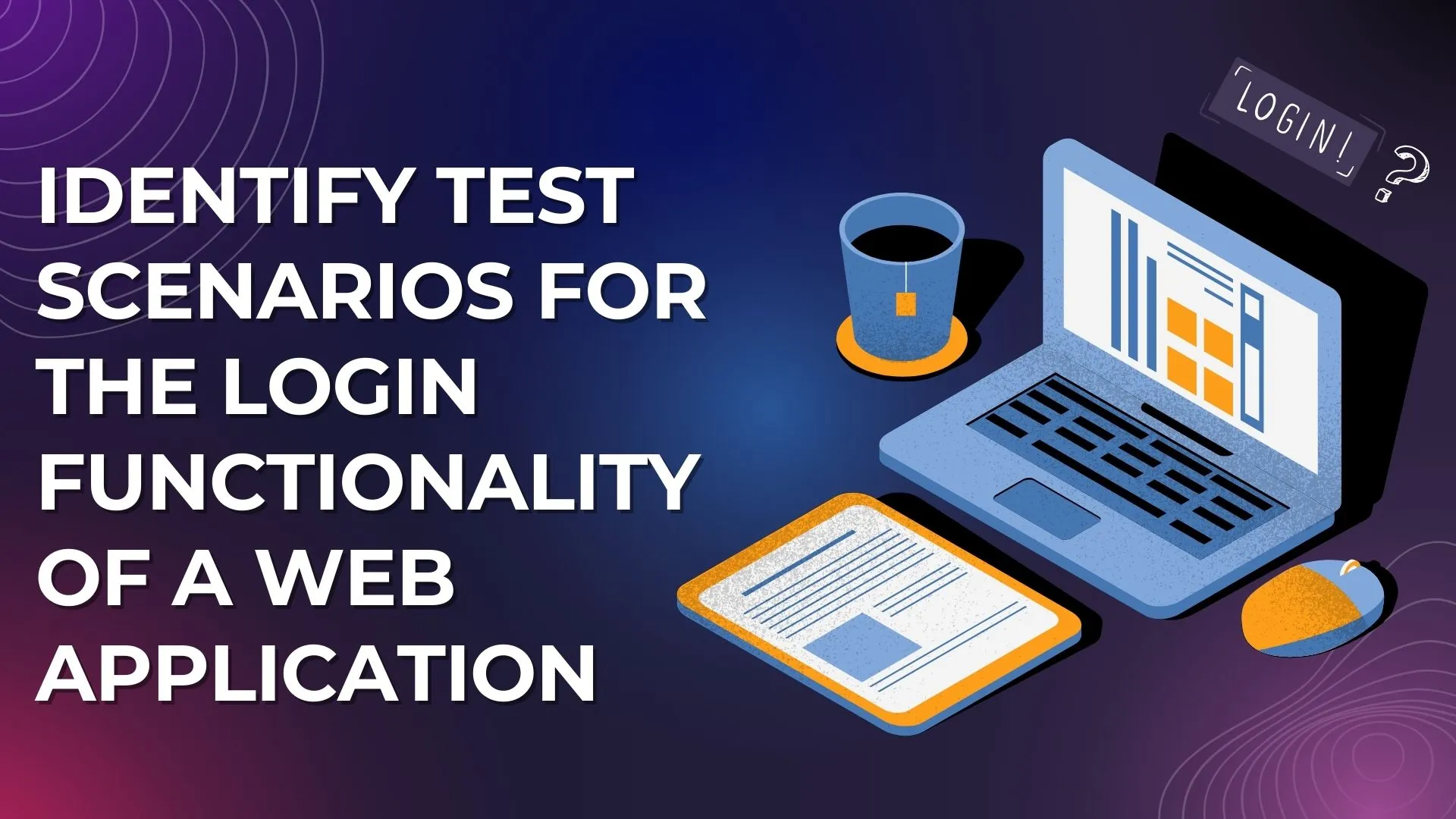
Create Test Cases: Develop basic testing paths that exercise different components of the code level, ensuring coverage of all statements, branches, and paths.
⏩Practical Implementation:
- Create test cases for a calculator application to test boundary values such as the maximum and minimum input values for addition, subtraction, multiplication, and division operations.
- For a travel booking website, a test case might focus on the reservation process for flights or hotels. This involves validating different booking parameters such as departure dates, destinations, passenger details, and payment methods to guarantee a smooth and error-free booking experience.

You can make sure that the software you create is more trustworthy and stable by following these guidelines and including white box testing across the whole software development lifecycle.
Next, let's talk about the benefits and drawbacks of using white box testing in the development process.
Let’s see some Pros and Cons of White box testing in 2024
All in all, White-Box Testing can be a challenging process, but it can also uncover hidden bugs and provide engineers with important insights into the inner workings of the software.
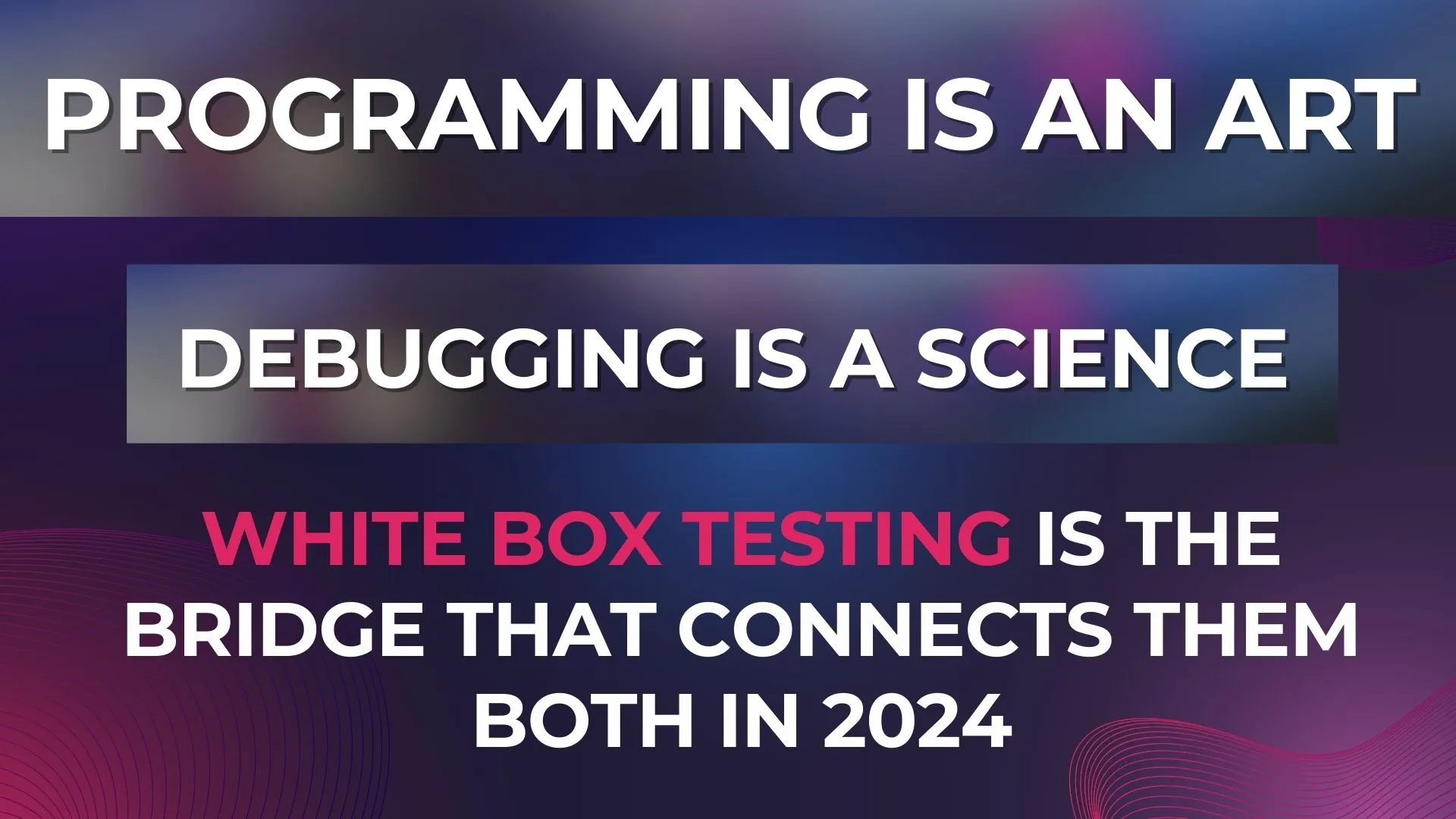
Pros of White Box Testing-:😀
- Extensive Testing: White-box testing permits a more thorough analysis by looking at the internal code structure, which may reveal hidden flaws that black-box testing was unable to find.
- Code Coverage: Methods such as code coverage testing guarantee that a significant portion of the code is run through tests, which produces a product that is more dependable.
- Effective Debugging: Debugging can be streamlined by comprehending the logic of the code-based testing, which makes it easier to identify the source of mistakes.
- Test Case Design: Having an understanding of internal operations makes it easier to create focused test cases that efficiently reveal possible problems.
- Better Logic Flow: Finding inefficiencies and potential areas for code optimization can be done by testing different code pathways.
- Early Defect Detection: Before considerable functionality is built upon possibly problematic code, issues can be found early in the development process.
- Maintainability: Well-thought-out white-box tests serve as dynamic documentation, making it easier to comprehend the functionality of the code when performing subsequent maintenance.
- Test Automation: These methods are very amenable to automation, which minimizes the labor-intensive nature of software testing methodology.
- Reflection of Developers: The process of writing white-box tests pushes developers to consider all possible edge cases and functionalities of their code.
- Security Improvements: White-box testing can reveal security flaws in the logic of the code, making the final product more safe.
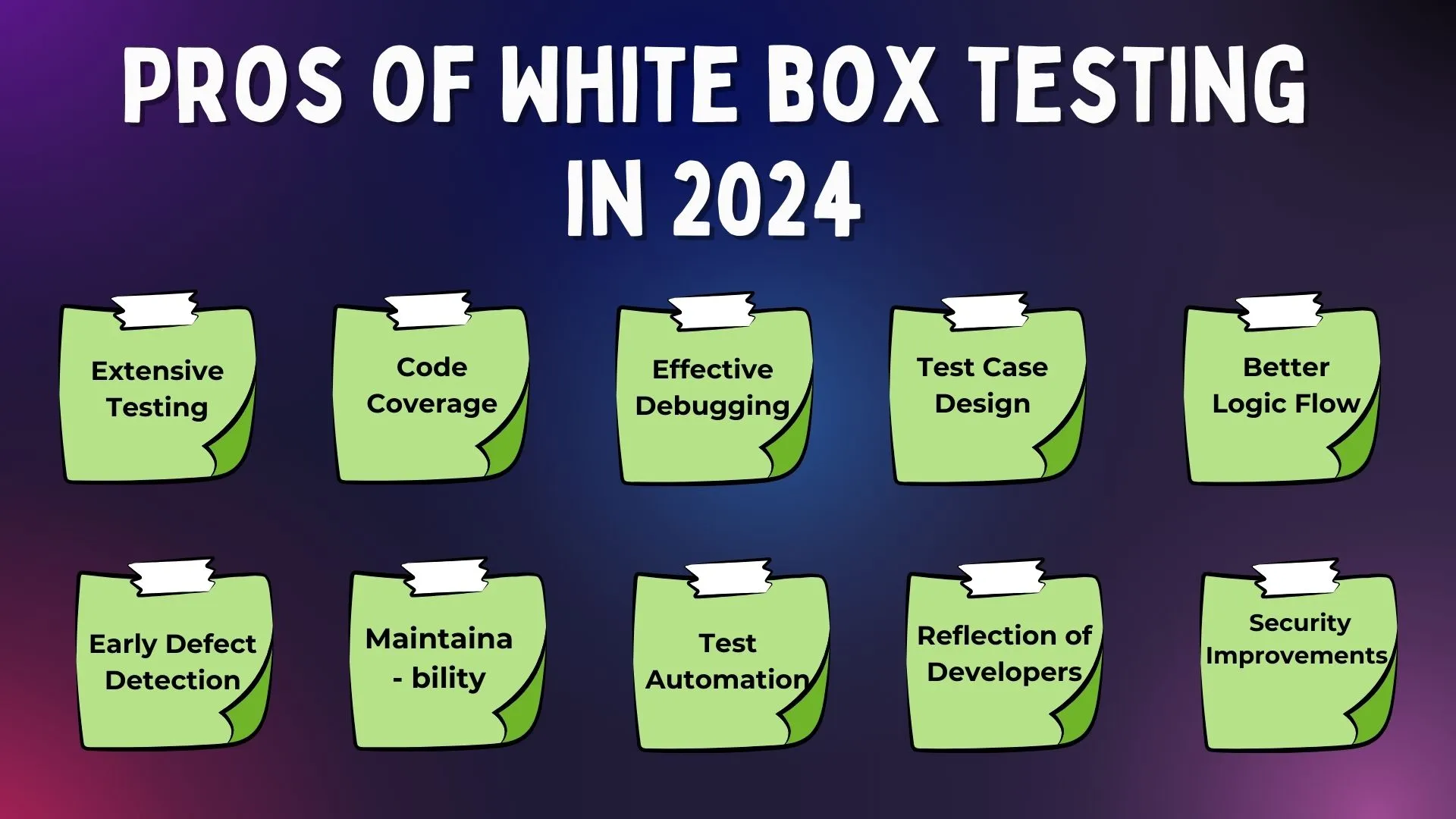
Cons of WhiteBox Testing-:
- Cost and Time: White-box testing sometimes calls for knowledgeable testers with programming experience, which raises expenses and may cause testing schedule extensions.
- Limited Scope: Although exhaustive, white-box testing may miss some user activities or unanticipated inputs that are discovered by black-box testing.
- Maintenance Burden: Updating white-box test cases is required when there are code changes, which results in an additional maintenance burden.
- Sensitivity Towards Known flaws: Because they are familiar with the code, testers may concentrate on known flaws and miss unknown ones.
- Scalability Issues: Extensive codebases may render white-box testing unfeasible, posing a challenge to obtaining thorough coverage.
- Overly Technical: Non-technical stakeholders may find white-box testing more difficult to utilize due to its technical nature.
- Documentation Dependency: Clear and accurate code documentation is essential to the efficacy of white-box testing.
- Limited Creativity: Testers may become obsessed with tried-and-true methods of testing inside the framework of the code, possibly overlooking novel problems.
- Developer Focus: Logical errors cause developers to become distracted from their primary responsibilities.
- False Sense of Security: Unexpected issues can surface during real-world user interactions, so passing entire code does not ensure a perfect product.
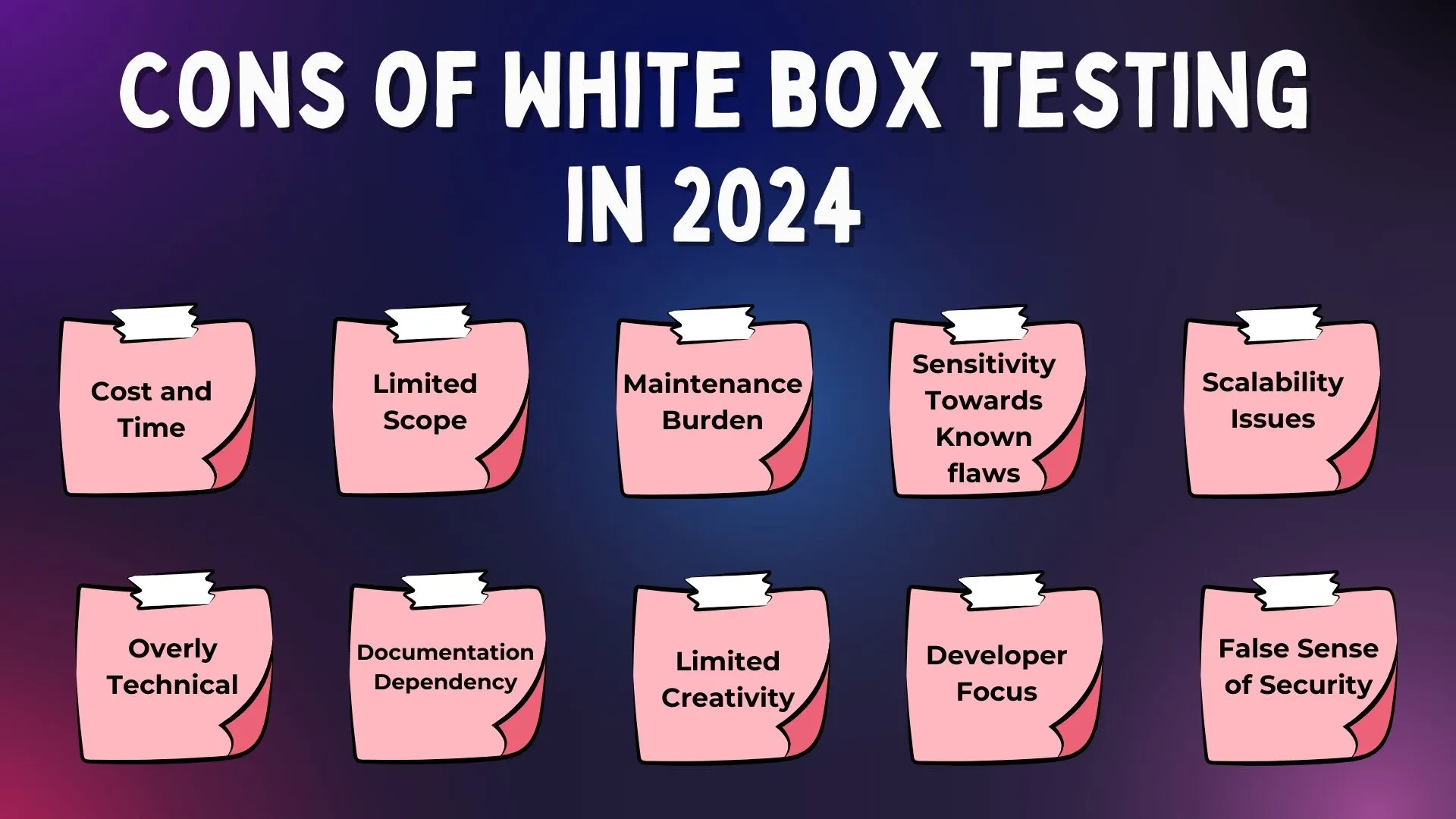
Closing Notes
So, that's our comprehensive look at White Box Testing!
We've covered the how's, why's, and what's, giving you a solid foundation for this powerful testing technique.
Remember, white-box testing isn't meant to be used in isolation. It complements other testing methods, like black box testing, to provide a comprehensive quality assurance strategy.
By incorporating white box testing throughout the development lifecycle, you can empower your team to craft secure and dependable software applications.
People also ask :
⏩Does White Box Testing Fall In the Alpha Or Beta Testing Category?
White box testing is the internal testing performed by the company. It belongs in the category of alpha testing as a result.
⏩Is White Box Testing Manual Or Automation?
White box testing can be done both automatically or manually. White box testing may be automated with relatively little difficulty.
⏩How is White Box Testing different from Black Box Testing?
While Black Box Testing looks at the functionality without knowing the inside code, White Box Testing concentrates on the system's internal structure.
⏩What are the key techniques used in White Box Testing?
Statement coverage, branch coverage, path coverage, and situation cover are some of the techniques.





%201.webp)
